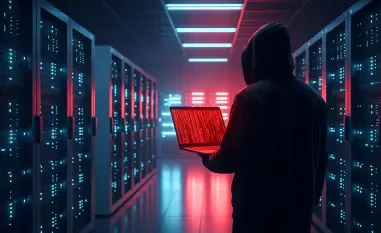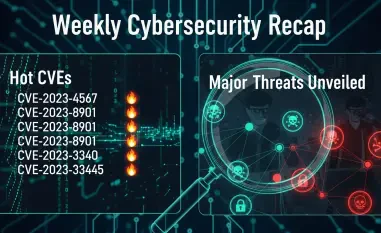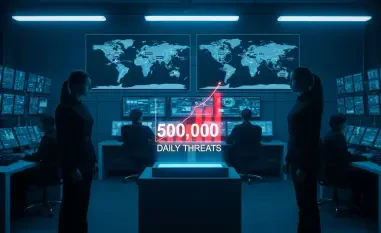In today’s digital world, technological advancements are evolving at breakneck speed, reshaping industries and economies globally. While this digital revolution offers immense opportunities, it also brings unprecedented cybersecurity risks. Ensuring a secure, resilient digital future requires a strategic shift in approach, focusing more on adaptive, robust systems rather than traditional security mechanisms.
The Transformative Impact of Emerging Technologies
Technological Innovations and Their Dual-Edged Sword
Emerging technologies like artificial intelligence (AI), quantum computing, and the Internet of Things (IoT) are revolutionizing the way businesses operate and society interacts. These technologies promise enhanced efficiency, improved decision-making, and novel solutions to longstanding problems. However, they also create new vulnerabilities that cybercriminals can exploit.
AI exemplifies this dual dynamic. On one hand, it empowers cybersecurity defenses with the ability to predict and identify potential threats more accurately, leveraging pattern recognition and advanced algorithms. On the other hand, those same AI capabilities can be wielded malevolently. Cybercriminals are using AI to craft sophisticated phishing schemes, conduct data poisoning attacks, and develop more resilient malware. This dual-use nature of AI necessitates that ongoing research and innovation in AI-driven security measures remain a priority to stay ahead of potential threats.
Quantum computing, another game-changing technology, amplifies the stakes even further. Quantum computers harness the principles of quantum mechanics to process information at unprecedented speeds. While the benefits of quantum computing range from solving complex scientific problems to optimizing supply chains, its potential to disrupt current encryption methods poses a significant threat. Current encryption protocols that protect sensitive data and secure transactions could be rendered obsolete by quantum computing’s immense processing power. This urgency underscores the need for a rapid shift towards developing and adopting quantum-proof encryption technologies to safeguard against future vulnerabilities.
Quantum Computing: The Next Frontier
Quantum computing represents a leap in processing power, one that brings both immense promise and peril. The technology’s ability to solve complex problems quickly could revolutionize industries like logistics, pharmaceuticals, and finance. For instance, quantum computing could accelerate drug discovery processes by simulating molecular interactions at a speed unattainable by classical computers, thereby ushering in new medical breakthroughs and advancing public health in significant ways.
However, the very characteristics that make quantum computing so powerful also make it a potent threat to cybersecurity. The cryptographic algorithms that currently protect online communications, financial transactions, and sensitive data rely on the difficulty of factoring large numbers—a task classical computers find time-consuming. Quantum computers, with their superior processing capabilities, could crack these encryption methods in a fraction of the time, upending the foundation of modern digital security. This potential vulnerability necessitates an urgent shift towards quantum-proof encryption technologies. Organizations and governments must prioritize the research and deployment of new cryptographic techniques robust enough to withstand quantum attacks, ensuring that the leap towards this new technological frontier does not compromise existing security frameworks.
Expanding and Evolving Cyber Threat Landscape
The Growing Attack Surface
The proliferation of connected devices is expanding the cyberattack surface exponentially. By 2025, it’s projected that 75 billion devices will be interconnected, offering cybercriminals a broader range of entry points. Each connected device, from smart home appliances to industrial machinery, can potentially be a vector for cyberattacks if not properly secured. This increasing connectivity requires comprehensive and robust security measures tailored to manage and mitigate the risks associated with such a vast and varied digital ecosystem.
The Internet of Things (IoT) exemplifies this expanded attack surface. From wearable health monitors to smart city infrastructure, the IoT integrates digital and physical systems in ways that enhance everyday life but also introduce new vulnerabilities. A single compromised device can serve as an entry point for cybercriminals to access an entire network, making it crucial that each component in this interconnected ecosystem is fortified against threats. The challenge lies in the sheer diversity and volume of IoT devices, each with different security capabilities and vulnerabilities. Implementing standardized security measures across all connected devices is vital for building a resilient, secure digital environment capable of withstanding cyber threats.
Increasing Complexity and Sophistication of Threats
The sophistication of cyber threats is evolving alongside technological advancements. Cybercriminals are leveraging advanced techniques to exploit new vulnerabilities, making traditional security approaches increasingly inadequate. Phishing schemes, ransomware attacks, and the exploitation of zero-day vulnerabilities are becoming more sophisticated, requiring a dynamic and proactive approach to cybersecurity. Organizations must adopt more flexible and adaptive mechanisms that can respond to these evolving threats in real-time.
Consider ransomware, a type of malware that encrypts a victim’s data until a ransom is paid. Modern ransomware attacks are not just more frequent but also more targeted and complex. Cybercriminals now conduct extensive reconnaissance to identify high-value targets, leading to significant financial and reputational damage. Moreover, the rise of ransomware-as-a-service platforms has lowered the barrier to entry for less-skilled cybercriminals, further amplifying the threat. Organizations need to implement real-time threat intelligence, advanced endpoint security solutions, and comprehensive incident response plans to counteract these increasingly sophisticated attacks and ensure the integrity of their operations.
Emphasizing Resilience Over Traditional Security
From Security by Design to Resilience by Design
Historically, cybersecurity practices have revolved around the concept of “security by design,” where systems are designed with security features embedded from the outset. However, with the modern threat landscape’s growing complexity, this approach is no longer sufficient. Instead, a shift towards “resilience by design” is necessary. This paradigm emphasizes building systems capable of withstanding attacks and rapidly recovering from them, ensuring sustained operations and minimizing disruptions.
Resilience by design shifts the focus from merely preventing breaches to developing robust systems that can continue to function even when attacks occur. It encompasses strategies like employing redundant systems, using decentralized architectures, and creating recovery protocols that can be activated immediately after a breach. This approach not only aims to mitigate the impact of cyberattacks but also ensures that organizations can maintain critical operations and quickly return to normalcy. By prioritizing resilience, organizations can safeguard their assets against persistent and evolving threats, thereby providing a more secure and stable digital environment.
Continuous Monitoring and Adaptation
Part of adopting a resilience-by-design approach involves continuous monitoring and adaptation. Cybersecurity strategies need to be dynamic, incorporating real-time threat intelligence and constant updates to counteract new and emerging threats. Regular security audits, vulnerability assessments, and incident response simulations are vital components of a robust cybersecurity framework that can adapt and evolve with the threat landscape.
Continuous monitoring involves the deployment of advanced security information and event management (SIEM) systems that aggregate and analyze data from across an organization’s IT infrastructure. These systems can detect anomalies and potential threats in real-time, enabling quicker responses and limiting the potential damage from security incidents. Additionally, the application of machine learning algorithms allows these systems to improve over time by learning from past incidents and adapting to new threat patterns. Implementing such dynamic and adaptive strategies is crucial for maintaining the resilience and security of an organization’s digital assets.
Addressing Supply Chain Vulnerabilities
End-to-End Security in Global Supply Chains
The global interconnectedness of supply chains presents a significant cybersecurity challenge. As supply chains become increasingly reliant on digital technologies, they also become more vulnerable to cyberattacks. An attack on any part of the supply chain can have cascading effects, potentially disrupting entire industries. Implementing comprehensive end-to-end security measures is critical to protect the integrity and functionality of these global networks. This includes securing not just the primary systems but also the peripheral and third-party components connected to the supply chain.
Securing supply chains involves a multifaceted approach starting with a thorough assessment of the entire supply chain to identify weak links and potential entry points for cyberattacks. Organizations need to implement stringent security standards not just internally but also extend these protocols to suppliers, vendors, and other third-party entities involved in the supply chain. This could include measures such as mandating the use of secure communication channels, employing blockchain technology for transparent and tamper-proof record-keeping, and conducting regular audits and compliance checks. By ensuring that every element within the supply chain conforms to high-security standards, organizations can mitigate the risk of cyberattacks and maintain the integrity of their supply chain operations.
Collaborative Efforts for Supply Chain Security
Securing supply chains cannot be the responsibility of individual organizations alone. It requires collaborative efforts across industries, governments, and international bodies. Sharing threat intelligence, establishing standardized security protocols, and fostering a culture of cooperation can enhance overall supply chain security. By working together, stakeholders can develop robust defenses against the sophisticated tactics used by cybercriminals targeting supply chains.
Collaboration can take various forms, from establishing industry-wide cybersecurity councils and working groups to creating shared platforms for real-time threat intelligence exchange. These collaborative entities can help develop and propagate best practices, create standardized security protocols, and coordinate responses to emerging threats. Furthermore, governments can play a crucial role by enacting regulations that mandate minimum cybersecurity standards for industries and supply chains. By fostering a collaborative and cooperative cybersecurity environment, organizations can enhance the collective security posture of their supply chains and reduce vulnerabilities that could be exploited by malicious actors.
Tackling the Cybersecurity Skills Shortage
The Urgent Need for Skilled Professionals
A critical challenge in the cybersecurity landscape is the acute shortage of skilled professionals equipped to deal with emerging technologies’ complexities. This skills gap weakens defenses, leaving organizations vulnerable to attacks. Addressing this shortage requires substantial investment in cybersecurity education and training programs. Encouraging careers in cybersecurity from a young age and providing continuous learning opportunities for existing professionals can help bridge this gap.
To address this skills shortage, educational institutions, governments, and private organizations must work together to create robust training programs in cybersecurity. This can involve updating academic curriculums to include emerging technology trends, offering specialized certification courses, and promoting cybersecurity as a viable and rewarding career path from an early age. Internships, mentorship programs, and partnerships with tech companies can provide hands-on experience and practical knowledge, equipping the next generation of cybersecurity professionals with the skills needed to protect against modern threats. Furthermore, continuous professional development through regular training workshops and conferences can help existing professionals stay abreast of the latest advancements and techniques in cybersecurity.
Leveraging Interdisciplinary Expertise
In today’s digitally-driven world, technology is advancing at an astonishing pace, transforming industries and global economies in profound ways. The digital revolution opens up vast opportunities for innovation, efficiency, and growth. However, it also introduces significant challenges, particularly in terms of cybersecurity threats. As we become more reliant on digital systems, the vulnerabilities and potential for cyberattacks increase. To ensure a secure and resilient digital future, we need to rethink our cybersecurity strategies.
Traditional security measures are no longer sufficient in this rapidly changing landscape. Instead of focusing solely on fixed, rigid defenses, we must develop adaptive and robust systems capable of evolving alongside the threats. This shift in approach requires an emphasis on continuous monitoring, real-time threat detection, and proactive defense mechanisms. Incorporating advanced technologies like artificial intelligence and machine learning into our security strategies can help us stay one step ahead of attackers.
Moreover, educating individuals and organizations about cybersecurity best practices is crucial. As we build more sophisticated systems, we must also create a culture of awareness and preparedness. By fostering a proactive mindset and leveraging cutting-edge technologies, we can mitigate risks and pave the way for a safer digital environment. It’s imperative to balance progress with protection, ensuring that technological advancements contribute positively without compromising security.













